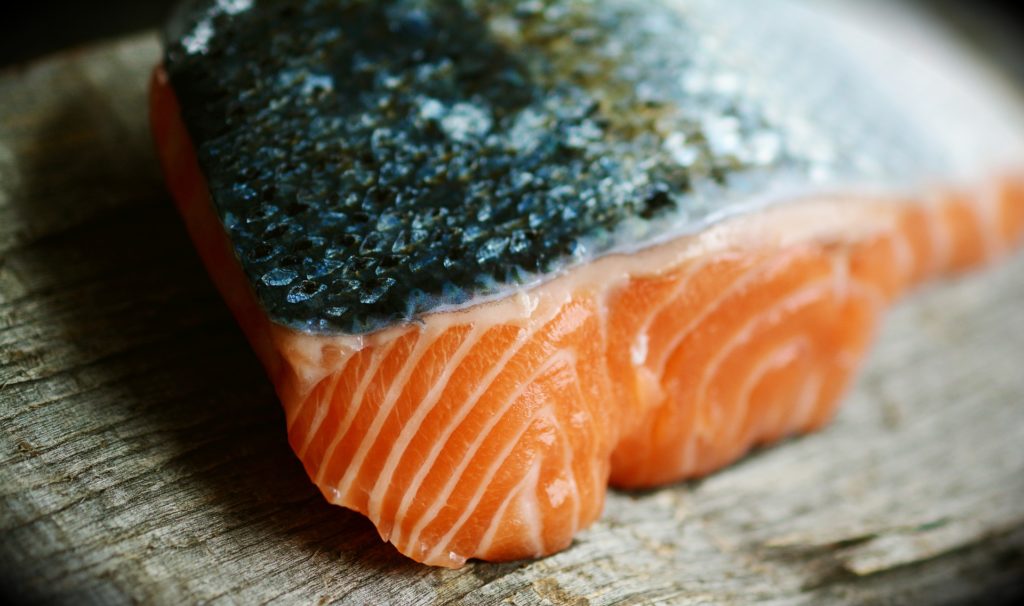Best Sources of Vitamin D – Healthy Whole Foods for Low Vitamin D
Having adequate vitamin d levels in the body at all times is necessary for health and well being. Unfortunately, vitamin d deficiency has become a worldwide epidemic due to various factors. An indoor working environment, lack of sunshine, not enough animal foods in the diet, and living in locations far from the equator can all contribute to low vitamin d levels in the body.
A study published in Issues in Mental Health Nursing found that over one billion people have either vitamin d insufficiency or deficiency. Furthermore, it was reported that having adequate vitamin d levels plays a significant role in the prevention and treatment of many chronic illnesses (1).
In fact, chronically low vitamin d levels are associated with mental disorders such as anxiety and depression (2). In fact, vitamin d supplementation has been shown to be extremely effective in those suffering from seasonal affective disorder (SAD) (3).
Furthermore, maintaining normal vitamin d levels is essential for keeping the immune system strong and staying healthy. It has been found that those exhibiting a vitamin d deficiency are very likely to suffer from an autoimmune disease and a weakened immune response (4).
Low Vitamin D symptoms
Symptoms of a vitamin d deficiency include, but are not limited to the following:
Poor Immune System
ADD / ADHD (5)
Irritable Bowel Syndrome (6)
Fatigue (7)
Anxiety and Depression
Insomnia (8)
Muscle Pain
Slow Wound Healing
Bone Loss
If you suffer from any of these symptoms, there is a high possibility that you may be suffering from a vitamin d deficiency. Unfortunately, doctors will not test for vitamin d levels for any of the following aliments.
This is why it’s highly recommended that you have a professional lab test done that will check your vitamin d levels. This will give you a confirmation if your symptoms are a result of a simple vitamin d deficiency.
It’s important that you take action if you think you may be suffering from low vitamin d levels in the body. The longer that you wait, the worse your condition can become.
The Best Sources of Vitamin D
Although synthetic vitamin supplements may have their place in the diet for some, we recommended that you obtain your vitamin d from whole foods. Unlike synthetic vitamin d supplements which contain a single ingredient, Cholecalciferol, whole foods contain a wide array of vitamins, minerals, and amino acids that help in the absorption of vitamin d.
Cod Liver Oil for Low Vitamin D
Cod liver oil is a godsend for anyone suffering from low vitamin d levels in the body. This superfood contains an abundance of vitamin d, vitamin k2, omega 3’s DHA and EPA, and trace minerals.
Researchers have found that cod liver contains 400 IU of vitamin d per 1 teaspoon and may be beneficial in preventing degenerative disease(s) such as multiple sclerosis (9).
In fact, those suffering depressive symptoms may find relief in supplementing with high quality cod liver oil. A recent study indicated that those who took a cod liver oil supplement daily were significantly less likely to have depressive symptoms than those who did not supplement (10).
As well as being a great source of vitamin d, cod liver oil can also help protect the teeth and bones from weakening. Since it’s naturally high in vitamin k2, it allows calcium to enter the bones and teeth much more effectively. More and more research has shown that that vitamin K2 is just as important as calcium when it comes to building strong bones and that the two work synergistically together (11).
Cod Liver should definitely be considered by anyone suffering from low vitamin d symptoms or by anyone wishing to improve their overall health.
Dropi Pure Icelandic Cod Liver Oil – Extra Virgin 220 ML
Salmon
Wild caught fish is an excellent source of natural vitamin d. Fatty fish, especially salmon, are particularly high in the fat soluble vitamin d. Eating fish such as salmon 2-3 times a week can help combat low vitamin d levels in the body naturally.

Nutritional analysis indicates that fatty fish such as salmon are the best food sources of vitamin d when compared to any other food (12).
Just be sure to always buy wild caught since the nutritional profile and living conditions of farm fish are not as good.
Ghee
Ghee has been used by Ancient Indian Yogis for centuries due to its health promoting properties. Ghee is an excellent source of vitamin d, vitamin K2, vitamin A, calcium, and fatty acids. It also contains no lactose or casein, the two common allergens found in dairy products.
Simply taking a spoonful of ghee daily can help improve a vitamin d deficiency and improve your health dramatically.
A study published in An International Quarterly Journal of Research in Ayurveda discovered that men who consumed higher amounts of ghee experienced significantly lower prevalence of coronary heart disease (13).
Furthermore, ghee is an excellent source of the short-chain fatty acid Butyric. Butyric is extremely beneficial for those suffering from digestive issues such as inflammatory bowel disease which is common in those with low vitamin d.
Butyric acid positively influences the gastrointestinal flora by suppressing the growth of harmful bacteria in the intestines and contains anti-inflammatory properties which can combat the symptoms of IBD (14).
ANCIENT ORGANICS 100% Organic Ghee from Grass-fed Cows
Pastured Eggs
Organic pastured raised eggs are one of the best sources of vitamin d. However, in order to get the benefits of vitamin d, you must eat the yolk! The whites are the least nutritious part of the egg and contain only a fraction of the beneficial nutrients found in the yolk.

It has been observed by several researchers that with the exception of cod liver oil and fish, the egg is the most concentrated natural source of vitamin d (15).
Adding a few eggs a week into your diet can help alleviate the symptoms of low vitamin d and can help raise levels in the body naturally.
Raw Cheese or Milk
Raw cheese or raw milk is a viable option for anyone looking for ways on how to increase vitamin d in the body. Like ghee, raw cheese and raw milk contain adequate amounts of vitamin d, vitamin k2, vitamin A, and fatty acids.
Although the vitamin d content found in dairy products such as raw cheeses and raw milk is not as high as compared to fish and cod liver oil, it’s still an extremely valuable food source of vitamin d. Every little bit of vitamin d that you can obtain from foods adds up over time and can help combat low vitamin d levels in the body.
Beef Liver
Just like Cod liver oil, beef liver is an excellent source of vitamin d, vitamin k2, vitamin A, and essential trace minerals. It’s mandatory that you choose an organic grass fed beef liver if you choose to eat this superfood.
The liver is where toxins get filtered from the body and typically this isn’t a problem if the animal is grown without antibiotics and fed a correct diet of grass. However, animals raised on antibiotics and fed corn will definitely have a tainted liver.
For those not able to get their hands on grass fed liver, desiccated beef liver can be a viable option. Although it’s probably not as high in vitamins and minerals as compared to fresh liver, desiccated beef liver has proven to be a powerful food supplement.
In fact, researchers are fortifying food products with desiccated beef liver in order to prevent and reverse nutritional deficiencies (16).
If your experiencing low vitamin d symptoms, consider eating more grass fed beef liver or supplementing with a grass fed desiccated beef liver supplement.
Ancestral Supplements Grass Fed Beef Liver (Desiccated)
Maitake Mushroom
Mushrooms are one of the best kept secrets when it comes to vitamin d rich foods. It has been shown that when mushrooms are placed in the sun, they can produce upwards to 45,000 IU of vitamin d. However, it must be recognized that the vitamin d found in mushrooms is d2. Research indicates that vitamin d3 is much more effective at raising low vitamin d levels than vitamin d2 (17).
Regardless, mushrooms are still a valuable food if you’re looking for ways on how to increase vitamin d levels naturally. That being said, out of all of the mushrooms, maitake and Agarikon have shown to have the highest amount of vitamin d content.
A study published in Dermato-endocrinology discovered that ingesting 2,000 IU of vitamin d2 in mushrooms is as effective as ingesting 2,000 IU of vitamin d2 or d3 in supplement form (18).
However, most synthetic vitamin d supplements are poorly absorbed by the body and vitamin d3 coming from animal foods still seems to be preferred over vitamin d2 by the body.
Consequently, mushrooms can make a great addition to the diet and can help combat low vitamin d levels in the body. However, they should be used in tandem with foods high in vitamin d such as cod liver oil and fatty fish.


Leave a Reply